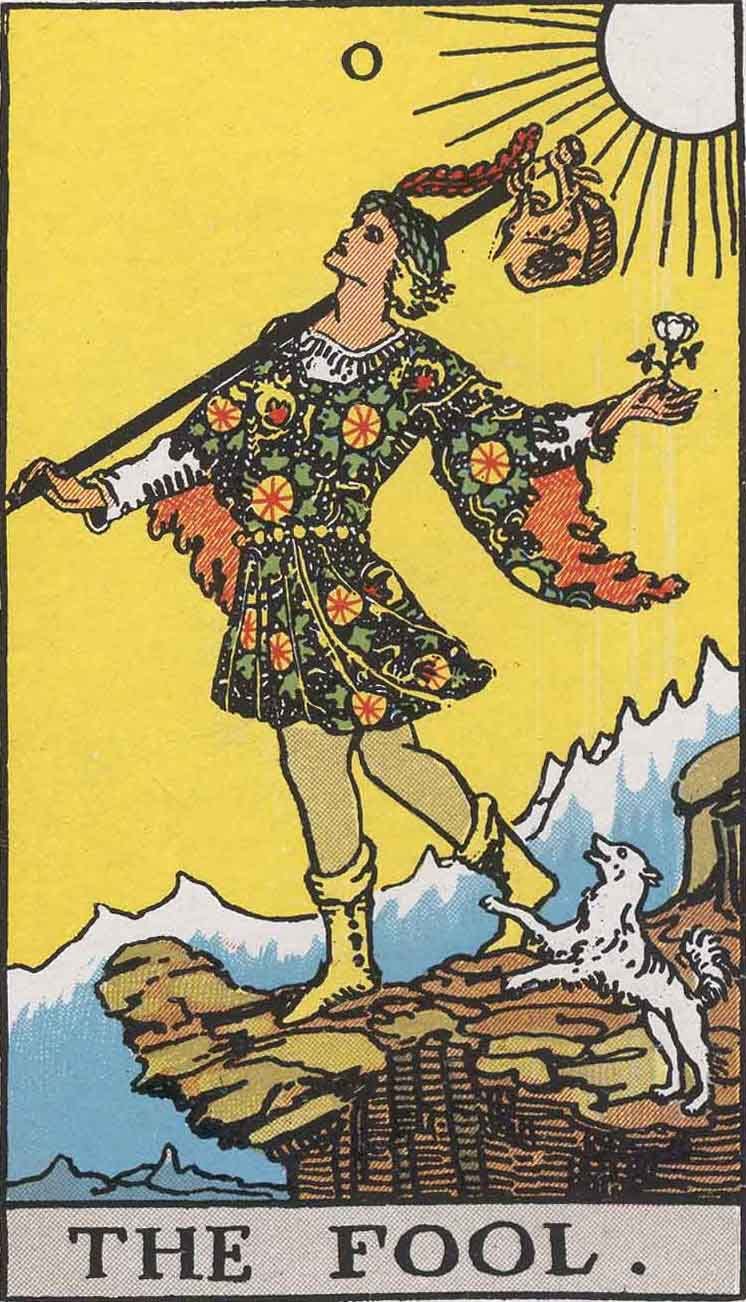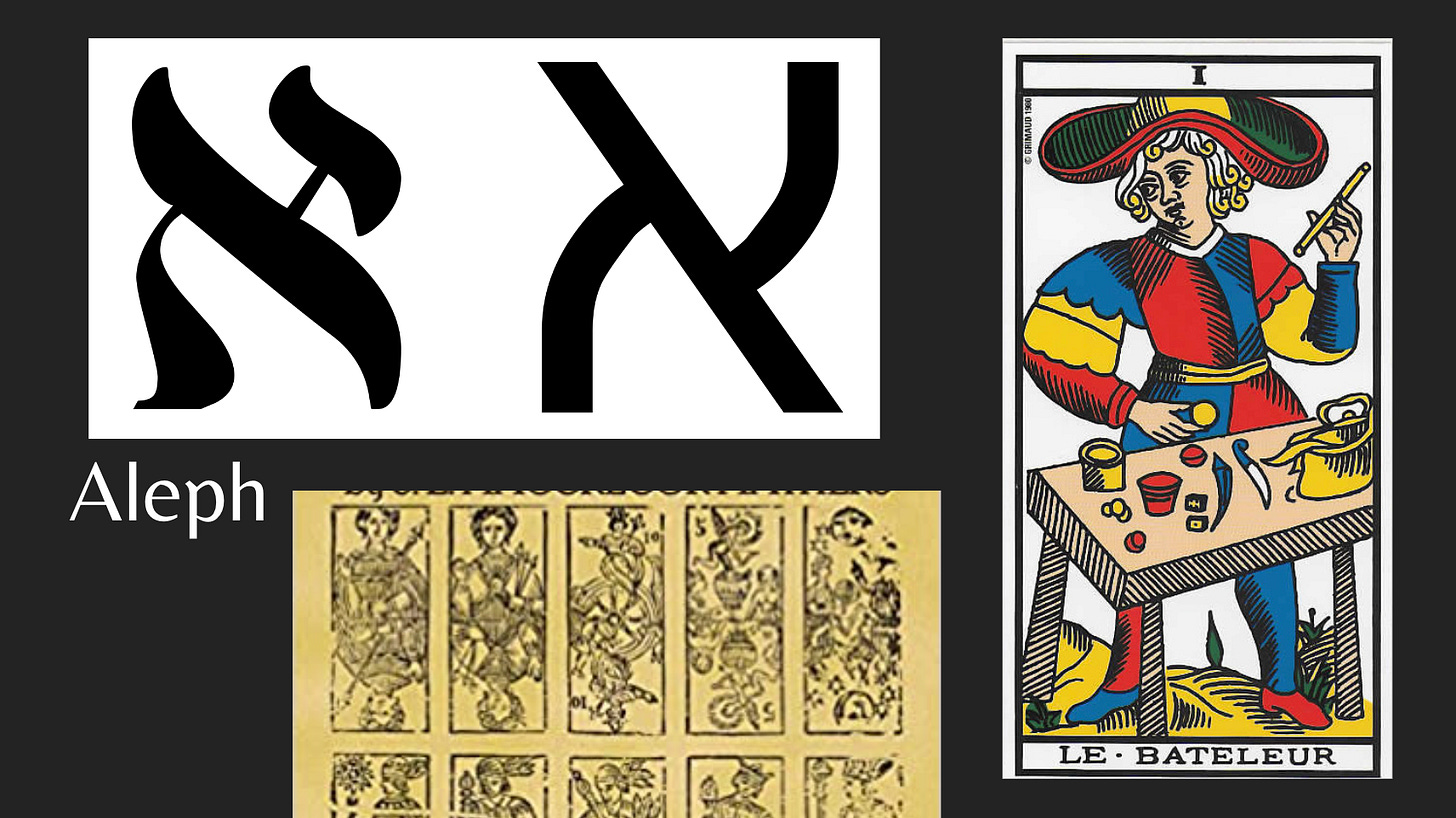Why is The Fool numbered zero?
And where does The Fool belong?
The debut episode of the video series for The Pixie and the Sorcerers is about The Fool, and it’s episode number 0. This is both because it’s the introductory video to the series — not really a chapter unto itself — and because The Fool in the Rider Waite Smith deck is numbered 0. But why is The Fool numbered zero?
In order to try to answer this, let’s look at the origins of tarot decks. The first tarot decks were simply Italian playing cards used in games. The earliest decks were called trionfi and date from the late 15th-century. The games played with these cards are referred to as tarocchi games. The word “tarot” comes from the word tarocchi. One of the most popular tarocchi games was the trick-taking game Tarocchini. The Fool card in these playing decks is always unnumbered and exists as separate from all the suits. In the game of Tarocchini, The Fool works as a type of wild card. In this way, we can compare it to the joker card in a traditional deck of playing cards — and its naming convention is similar, too, because a “fool,” “joker,” and “mat” (madman) have similar connotations. Because of its position as a wild card apart from the suits, its numbering has always been unconventional. Decks like the Marseille tarot deck from the 17th Century and the Sola Busca deck from the 15th Century have The Fool as an unnumbered card, while this 18th Century deck labels it as 22. The Rider Waite Smith deck was the first widely-used deck to label The Fool as 0.
The numbering of The Fool has interesting divinatory implications, too. By numbering it as 0, the Rider Waite Smith deck allows the card to be placed at the beginning of the Major Arcana or at the end, as well as theoretically anywhere along the way. When we consider the idea of the Major Arcana being The Fool’s Journey, the card’s number 0 helps it travel through the deck without disrupting the deck’s order.
As you know from my videos, Arthur Edward Waite, occultist and member of the Hermetic Order of the Golden Dawn, co-created the Rider Waite Smith deck with artist Pamela Colman Smith. He was responsible for giving Colman Smith direction on the Major Arcana cards, but Colman Smith’s own creativity and influence contributed heavily to how the cards turned out. Nevertheless, Waite was the author behind the little book you get in your RWS tarot decks, and he published a longer, more in-depth text to describe the cards, too.
Strangely, in this book, The Pictorial Key to the Tarot, The Fool — still number zero — is listed between number 20: The Last Judgment, and 21: The World. Waite numbers explains that it should actually be “number nothing,” and that part of the reason for this is that in some decks, the Hebrew letter aleph is ascribed to The Fool. Aleph is the first letter of the Hebrew alphabet, denoting the position of first to the card.
As I showed in the video for The Magician, decks like the Marseille tarot deck used the symbolism of aleph in that card, marking it as number 1. Waite addresses this inconsistency:
21--which, however, in most of the arrangements is the cipher card, number nothing--The Fool, Mate, or Unwise Man. Court de Gebelin places it at the head of the whole series as the zero or negative which is presupposed by numeration, and as this is a simpler so also it is a better arrangement. It has been abandoned because in later times the cards have been attributed to the letters of the Hebrew alphabet, and there has been apparently some difficulty about allocating the zero symbol satisfactorily in a sequence of letters all of which signify numbers. In the present reference of the card to the letter Shin, which corresponds to 200, the difficulty or the unreason remains. The truth is that the real arrangement of the cards has never transpired.
Later in the text, Waite examines the curious numbering more closely. He acknowledges how strange it is that the card be at once 0 and 21, or 22, or 1, or even 78. But he also reminds us that the numbering is really not as important when the cards are used for divinatory reasons, as the cards appear where they need to appear based on how we draw them in readings. He ends this paragraph with one of the best sentences for ending a line of questioning I’ve seen in a while:
That which hereinafter follows should be taken, for purposes of comparison, in connexion with the general description of the old Tarot Trumps in the first part. There it will be seen that the zero card of the Fool is allocated, as it always is, to the place which makes it equivalent to the number twenty-one. The arrangement is ridiculous on the surface, which does not much signify, but it is also wrong on the symbolism, nor does this fare better when it is made to replace the twenty-second point of the sequence. [18th Century French occultist] Etteilla recognized the difficulties of both attributions, but he only made bad worse by allocating the Fool to the place which is usually occupied by the Ace of Pentacles as the last of the whole Tarot series. This rearrangement has been followed by Papus recently in Le Tarot Divinatoire, where the confusion is of no consequence, as the findings of fortune telling depend upon fortuitous positions and not upon essential place in the general sequence of cards. I have seen yet another allocation of the zero symbol, which no doubt obtains in certain cases, but it fails on the highest planes and for our present requirements it would be idle to carry the examination further.
So Waite has asserted, in his own paradoxically dense and yet also surface-level way, that the ambiguity of the card is problematic. He decides, then, that his deck won’t follow suit, as it were. In his conclusion to the descriptions of the cards in the RWS deck themselves, he writes:
I have not attempted to rectify the position of the cards in their relation to one another; the Zero therefore appears after No. 20, but I have taken care not to number the World or Universe otherwise than as 21. Wherever it ought to be put, the Zero is an unnumbered card.
To Waite, the card can appear anywhere in the deck but is still always 0, and thus doesn’t change the numbering on any of its neighbouring cards. Therefore the last card of the Major Arcana is 21, and The Fool remains 0 no matter where you happen to put it.
Waite has one last thing to say about The Fool in this section:
In conclusion as to this part, I will give these further indications regarding the Fool, which is the most speaking of all the symbols. He signifies the journey outward, the state of the first emanation, the graces and passivity of the spirit. His wallet is inscribed with dim signs, to shew that many subconscious memories are stored up in the soul.
This is a good reminder once again that the symbolism of the cards is more important than their numbering, from both a divinatory perspective as well as a literary perspective. The journey outward, after all, is the beginning of a journey; but a journey’s end only signifies another one’s beginning. Therefore The Fool can be the first card, the last card, or anywhere along the way — its journey is never-ending.
For more posts like this one, and to help support this project, you can subscribe to the newsletter below.



